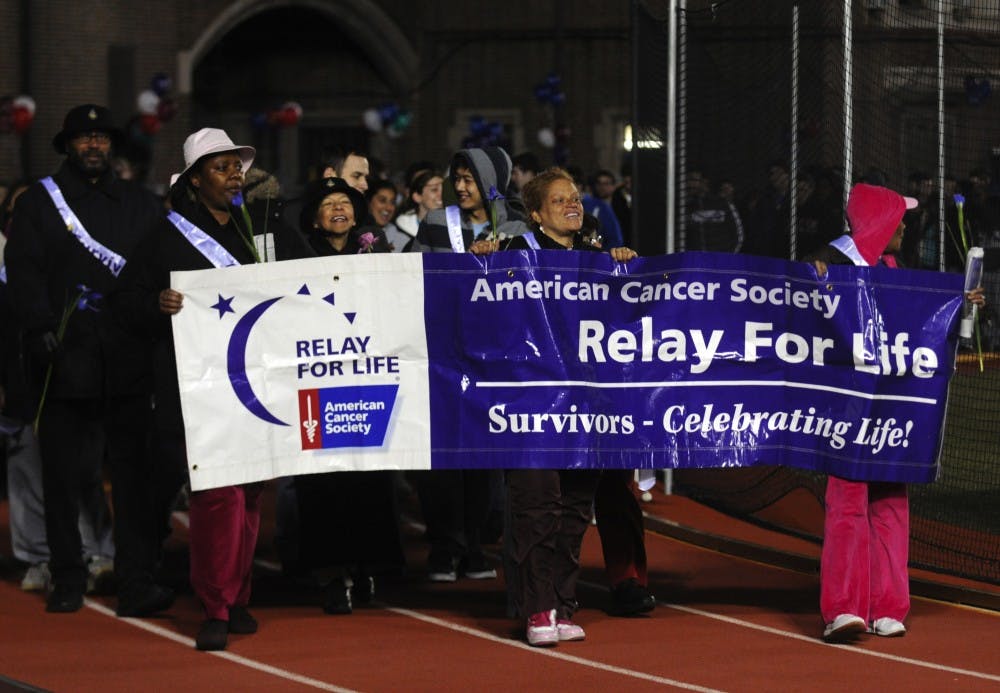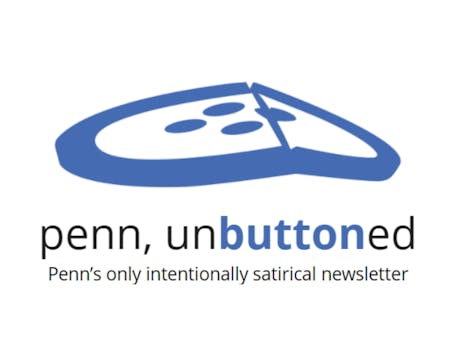
Since 2010, participation at Relay for Life has dropped by almost 50 percent.
The number of participants — people who registered for the event on Relay for Life’s website — plummeted from 2,052 in 2010 to 1,590 in 2011 to 1,114 this year, less than a thousand of whom actually attended the March 31 event.
“It was definitely disheartening having the small turnout from the Penn community,” College senior and Penn Colleges Against Cancer Co-President Jesse Rappaport said.
This year, the 12-hour overnight charity walk benefiting the American Cancer Society, one of the largest fundraisers on campus, took place Saturday March 31. The Penn CAC chapter, part of a nationwide network of ACS supporters, organized the event.
College senior and CAC Chair Linda Wang attributed the underwhelming turnout in part to the decline in attendance from Penn’s Greek community. “Greek competition is usually a really big driver in terms of fundraising, and this year, there just wasn’t that much Greek participation,” Wang said.
“People are usually more reactive and join right away,” Rappaport added. “It wasn’t as good of a push.”
Rappaport also cited Saturday’s cold weather as a reason for the low attendance. Last year’s event had to be moved to the Palestra, drastically changing the atmosphere of Relay 2011.
“Moving it to the Palestra last year may have put a bad taste in people’s mouths for this year,” Rappaport said.
“It wasn’t representative of a normal Relay,” Engineering senior and CAC Co-President Michelle Calabrese said. “It wasn’t as fun.”
In addition to the low attendance, this year’s Relay posted relatively low fundraising. As of April 10, this year’s Relay for Life campaign has raised $54,555. By comparison, Relay had raised $94,000 in 2010 and over $150,000 in 2009.
Although donations will remain open through August, Rappaport said “not a significant portion” of funds is raised after the event itself. “A lot of the money comes in directly before the event if people are aware that it’s coming up.”
However, Rappaport said many were not aware of the event in the days leading up, partly because it was scheduled on an earlier date than in past years. He said Easter, Passover and Spring Fling all limited Relay’s scheduling options.
Those who attended Relay also felt there was an unusual lack of buzz prior to this year’s event.
“Freshman year [2010], there was a lot of hype for Relay for Life, and everyone seemed really excited about it,” event participant and College and Engineering junior Michele Saums said.
But things were different this year. Wharton senior Greg Hall, who has attended Relay for Life events since he was in high school, said “it felt like it snuck up on me a little bit.”
The absence of Penn’s Class of 2011 may have also contributed to the smaller donations. “When you look at the top fundraisers this year versus last year, it’s such a big difference,” Calabrese said. She added that many seniors last year raised over $2,000 individually, while two people raised over $1,000 this year.
Rappaport said moving the beginning of the event from Friday 8 p.m. to Saturday 5 p.m. further hindered Relay’s potential because Saturday is generally a busier night for Penn students.
“It was the only day Penn Athletics was able to give us Franklin Field overnight,” College senior and Vice President of Relay for Life Kathlyn Herrick said.
Rappaport proposed moving the event back to Friday to help increase attendance for future Relays. He also suggested pushing for a later date “to try to get a warmer side of the weather.”
Both Rappaport and Engineering junior and Publicity Co-Chair Christine Uyemura noted that Relay has not updated its marketing strategies in the past few years, which may have doomed Relay to a less-than-stellar fundraising year. “We relied on the same [fundraisers] we’ve always relied on, and that’s something we need to fix for next year,” Uyemura said.
“One thing we can improve on,” Herrick added, “is reaching a broader audience rather than just basic advertising … Next year, we’re definitely going to try to make more of an effort to enhance our publicity, whether that means more flyering on Locust earlier or trying to reach out to more people as soon as we can.”
Rappaport said personnel changes in the Relay for Life committee contributed to a portion of the publicity problems. “We had a lot of younger members on our committee, so they didn’t really know the ropes. There was obviously some initial hesitation on how to get things done,” he said.
However, Rappaport maintains the Relay organizers “did the best we could,” and many other committee members echoed this sentiment.
ACS Staff member and Penn liaison John Arnao said “we’ve always had really strong support from the Penn community, so we’re not extremely worried. We’re going to work hard next year to make sure the numbers go up.”
And Arnao expects those numbers to return. “Penn is usually right up there among the best in terms of dollars raised and number of participants, and they have been for about six to seven years.”
Saums said she hopes Relay for Life’s participation rebounds in the years to come. “It is an awesome event, and when everyone is there, it is a lot of fun.”
Multimedia
INTERACTIVE: Relay for Life Participation and Donations, 2007-2012
The Daily Pennsylvanian is an independent, student-run newspaper. Please consider making a donation to support the coverage that shapes the University. Your generosity ensures a future of strong journalism at Penn.
DonatePlease note All comments are eligible for publication in The Daily Pennsylvanian.







